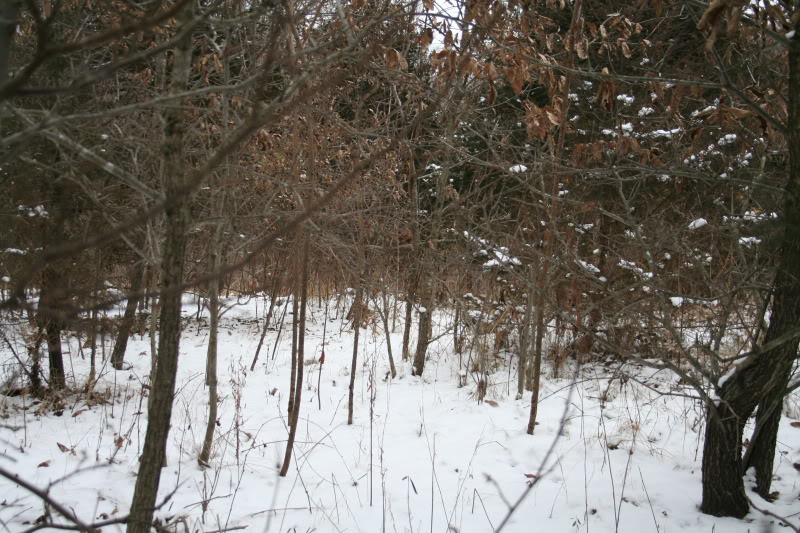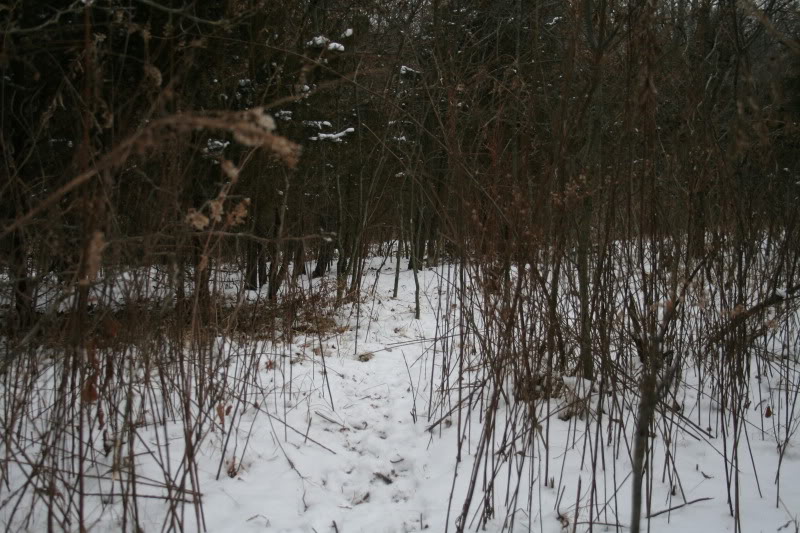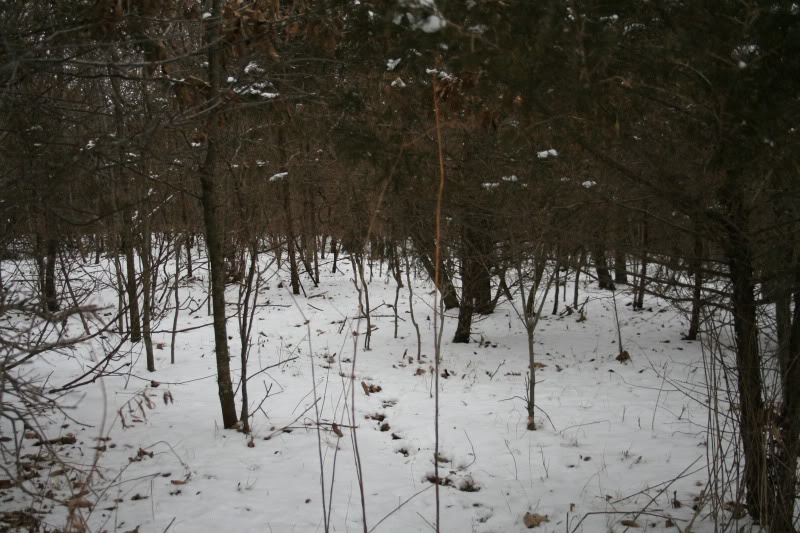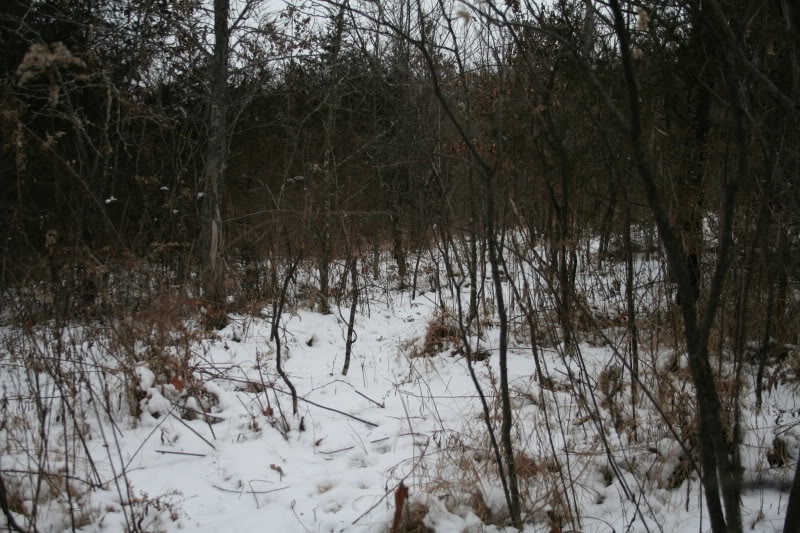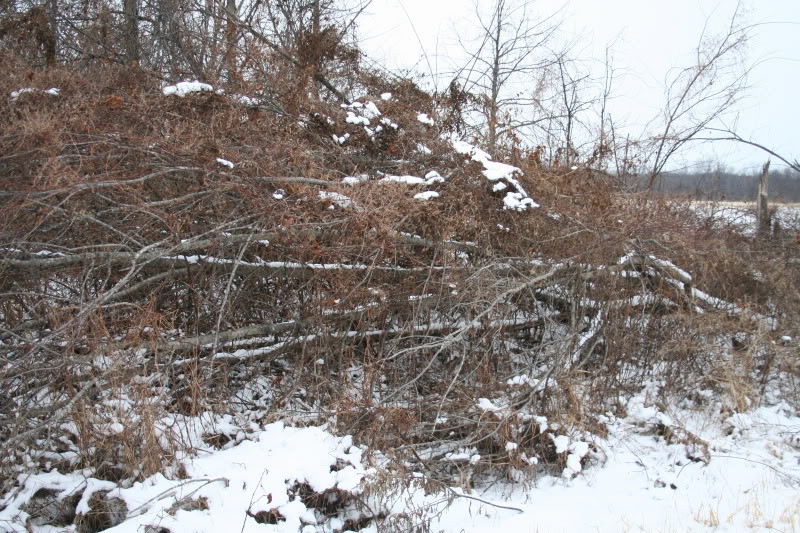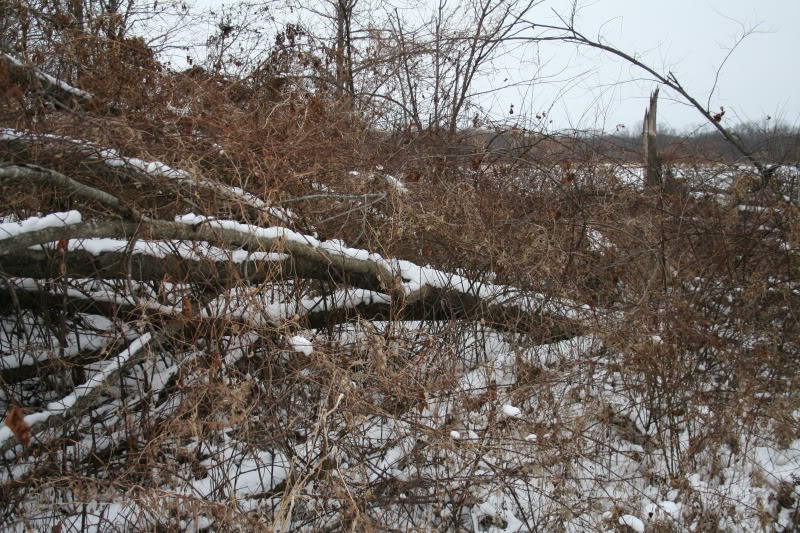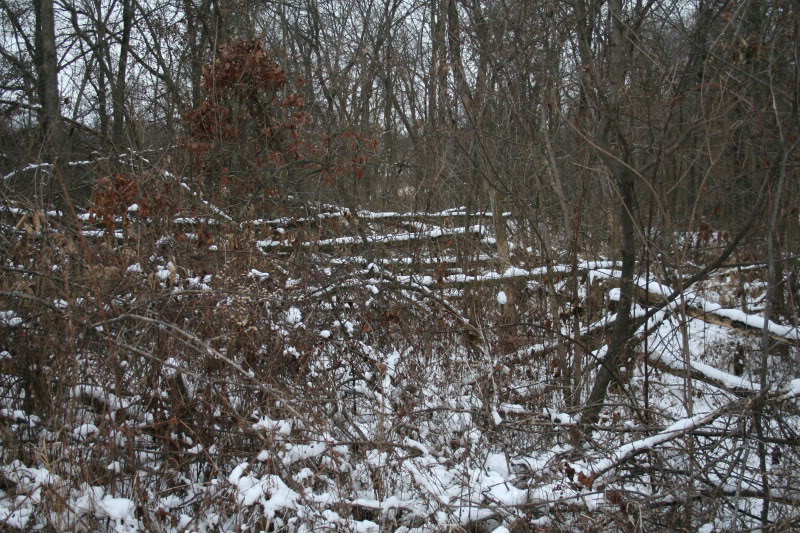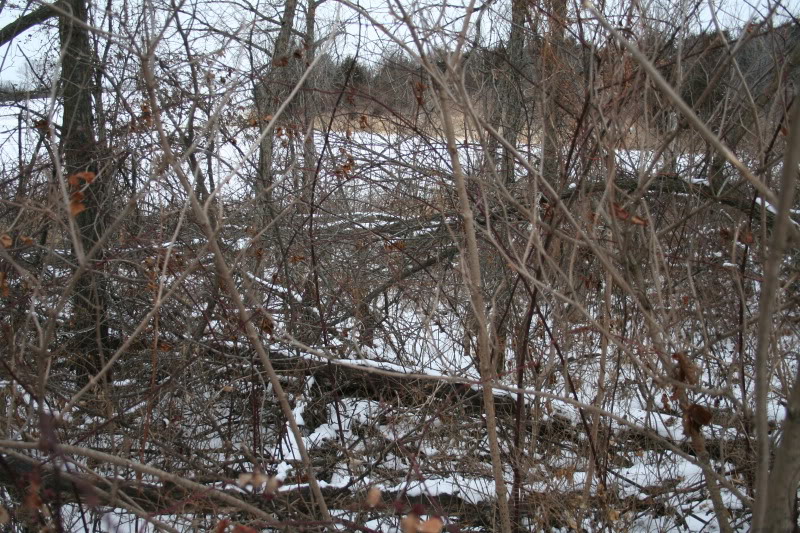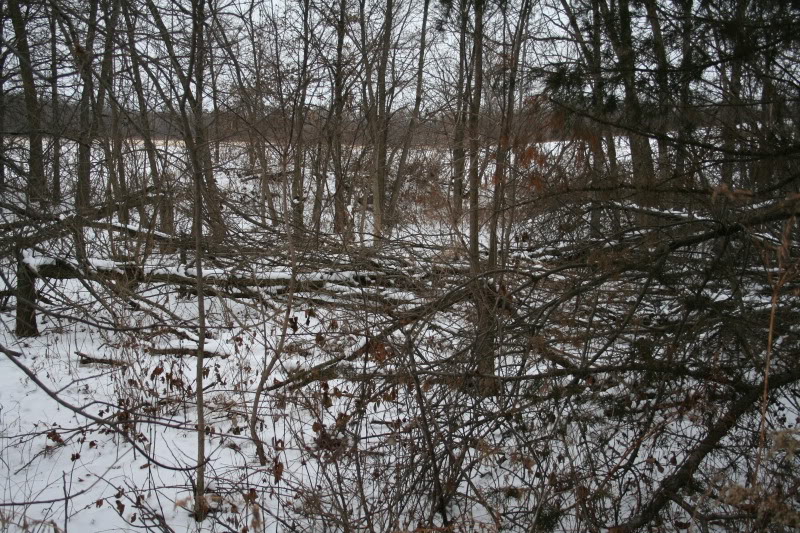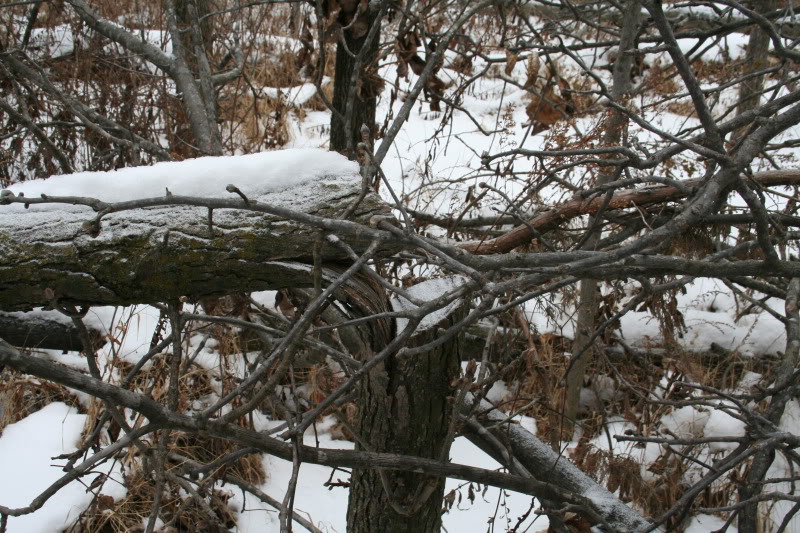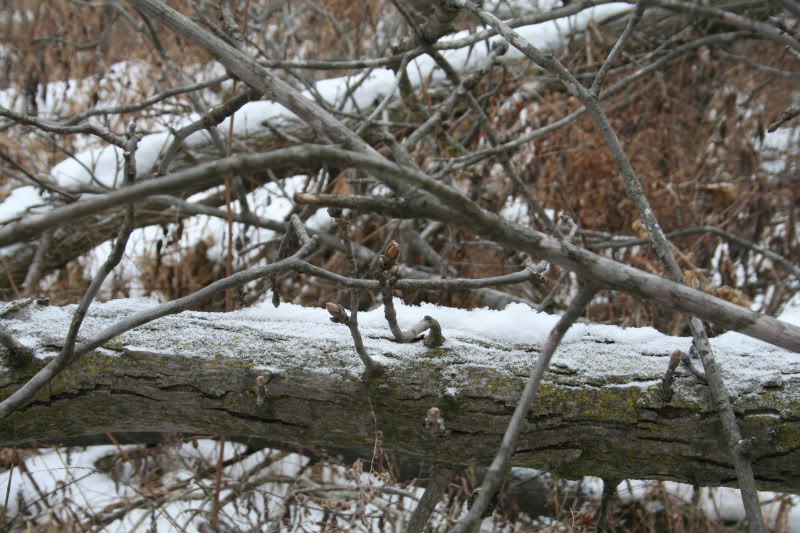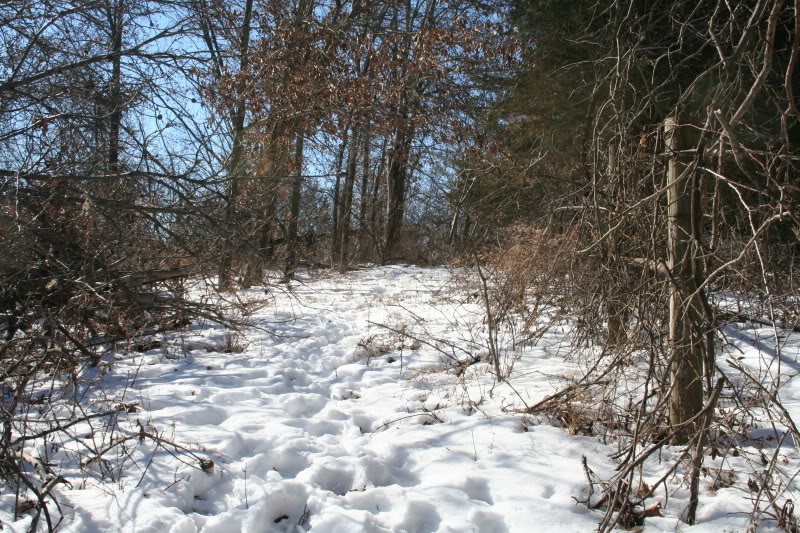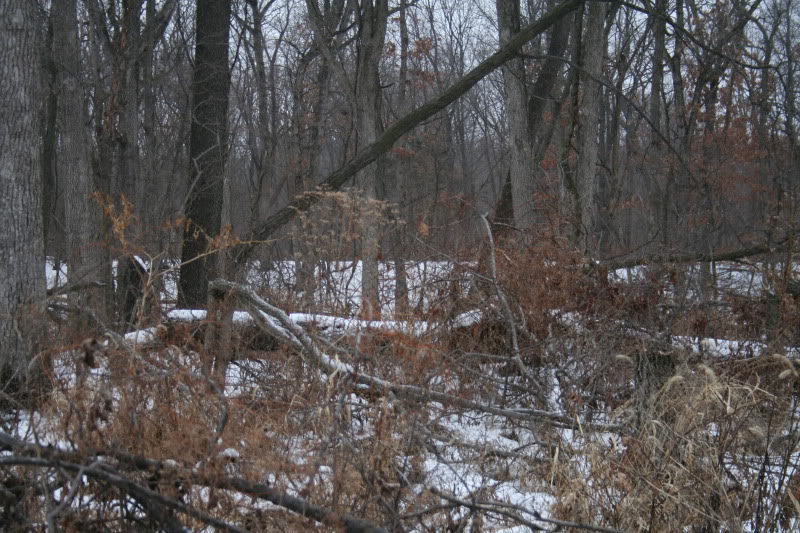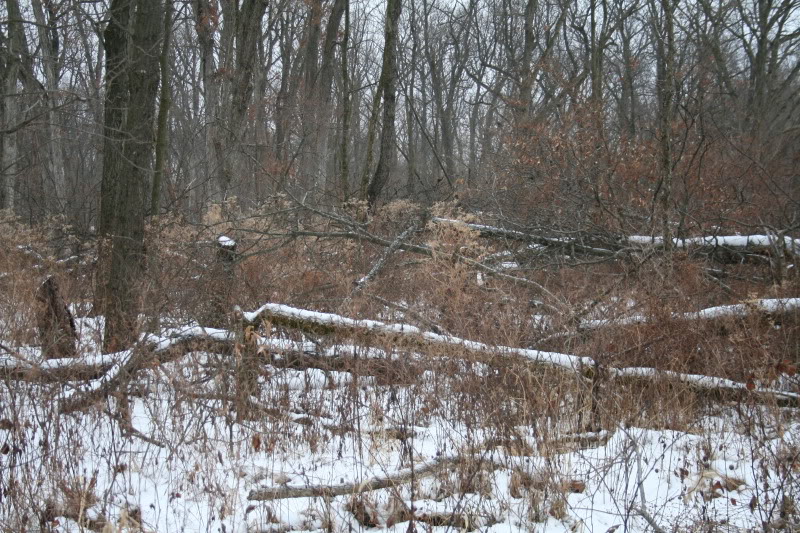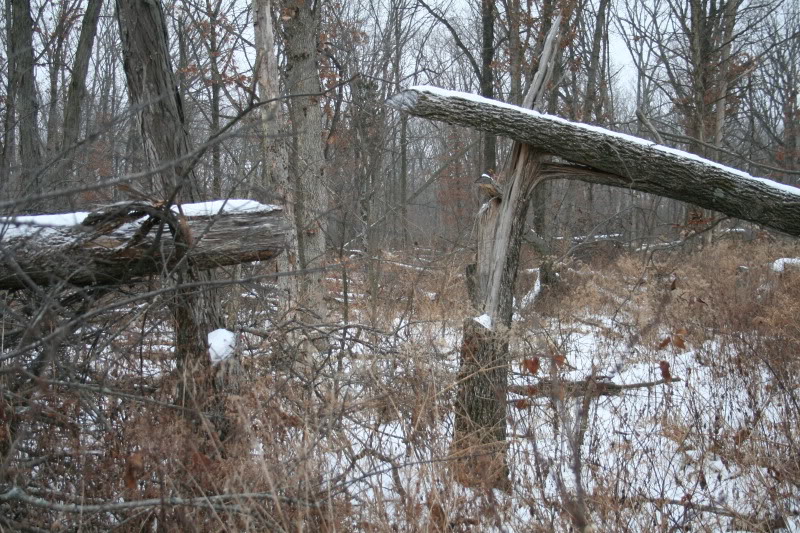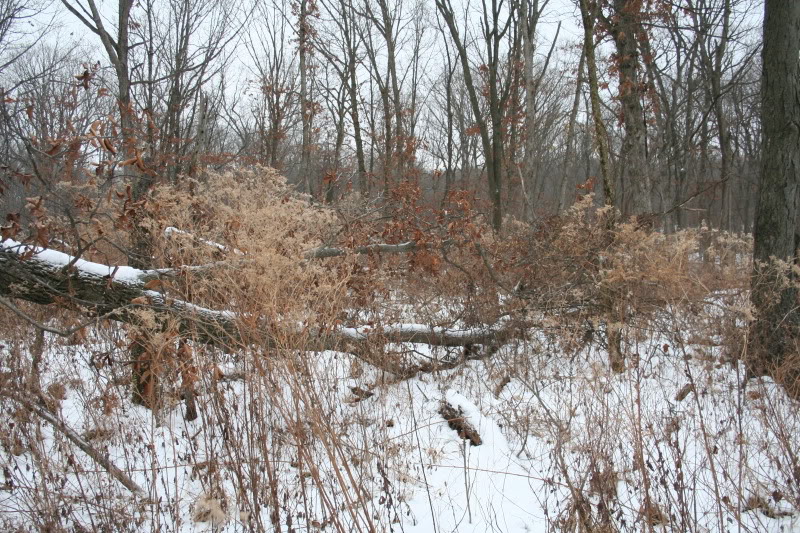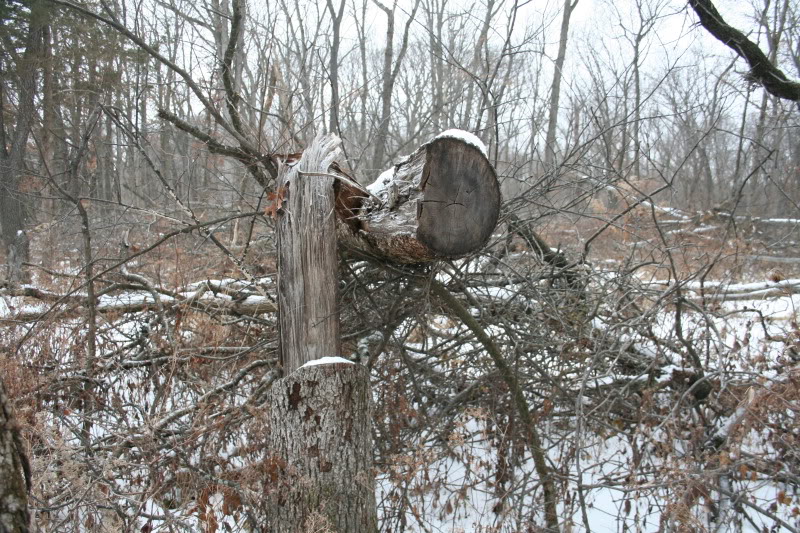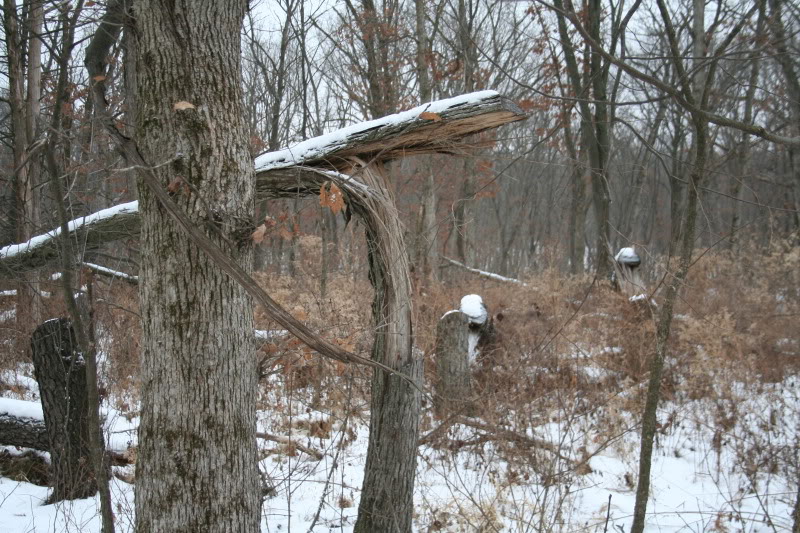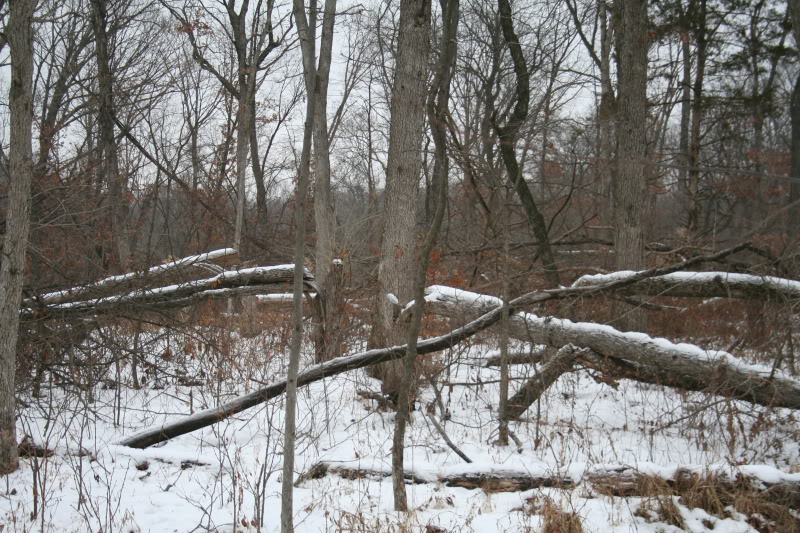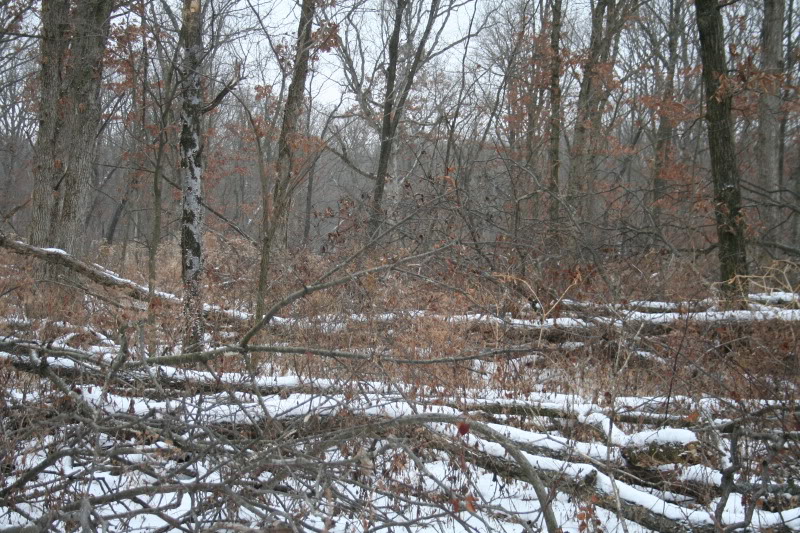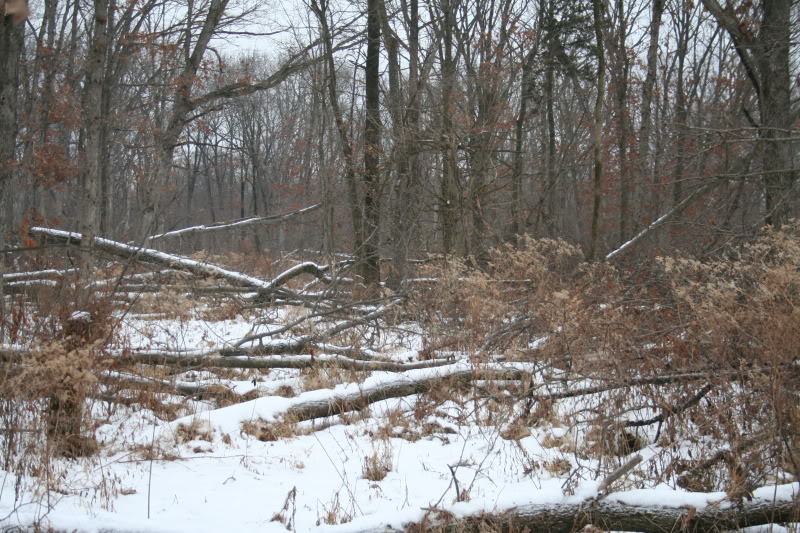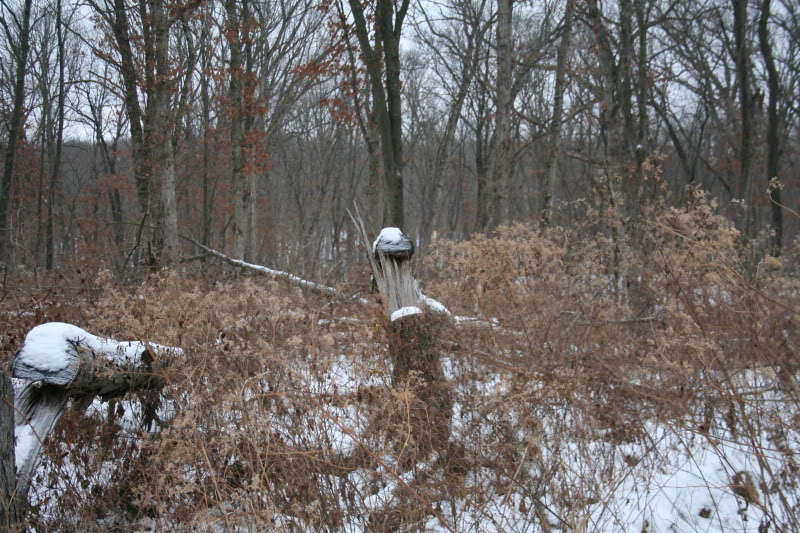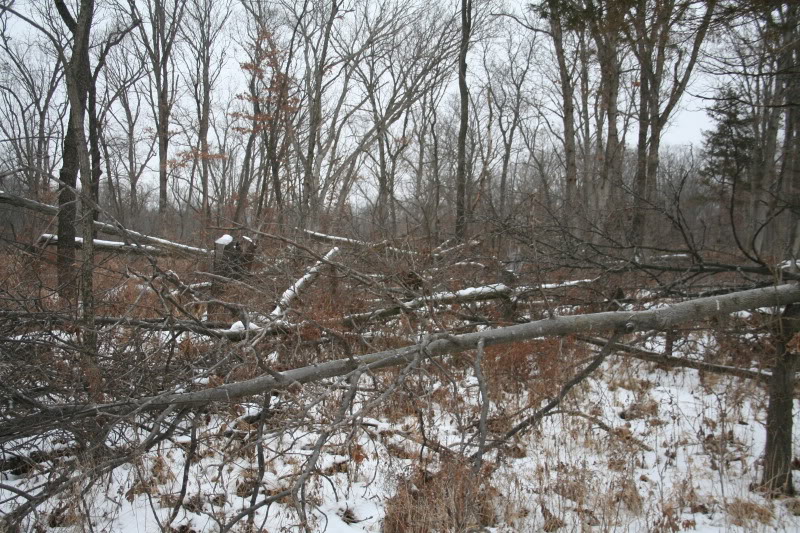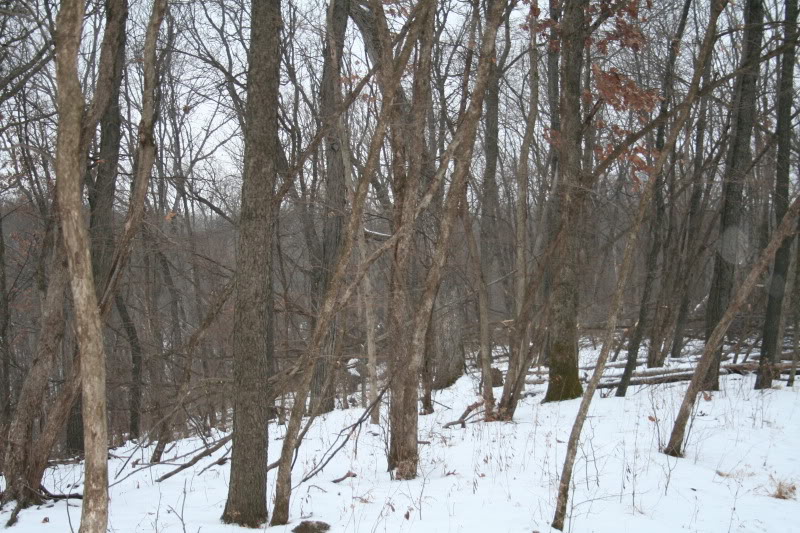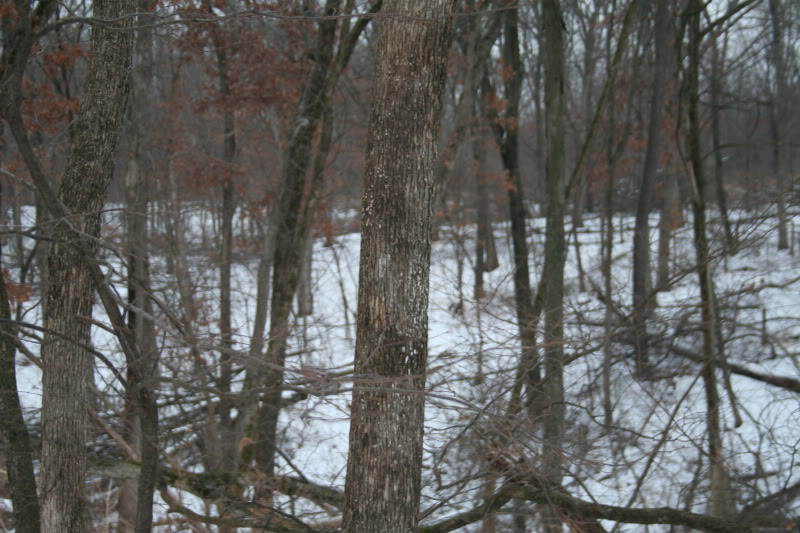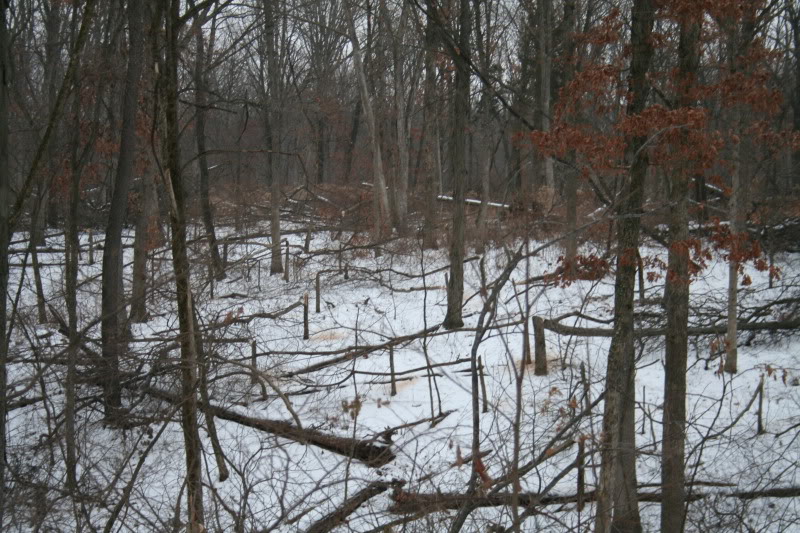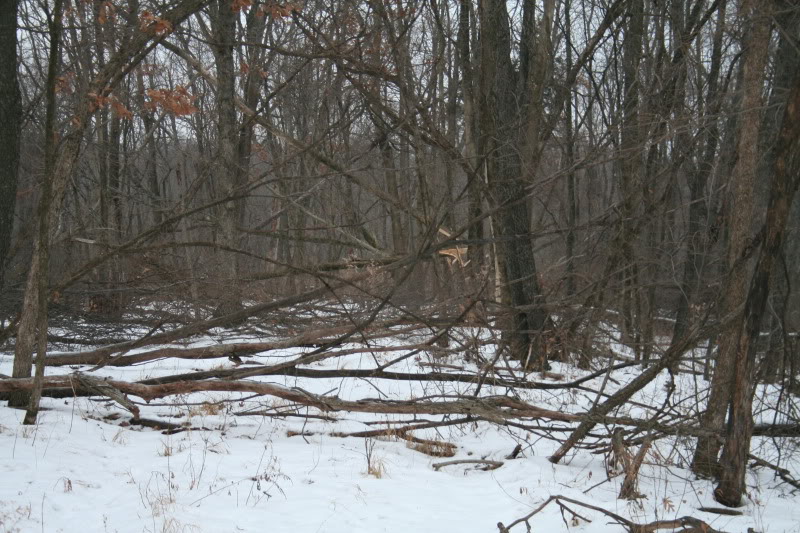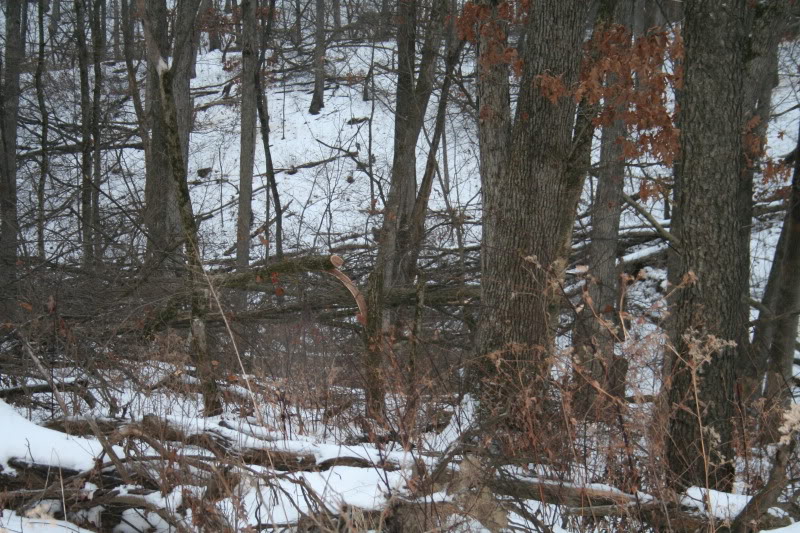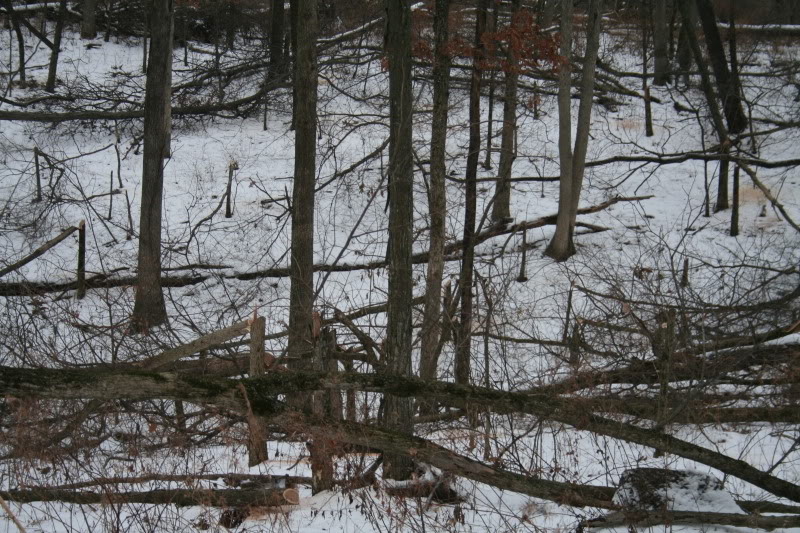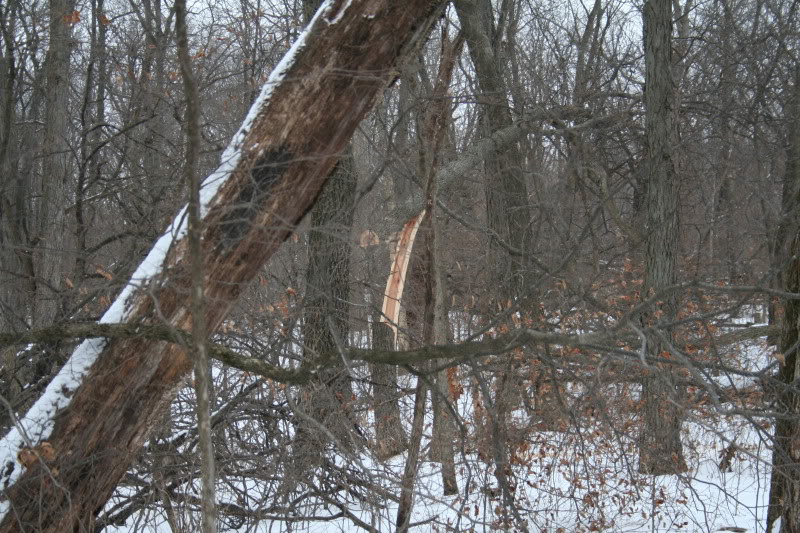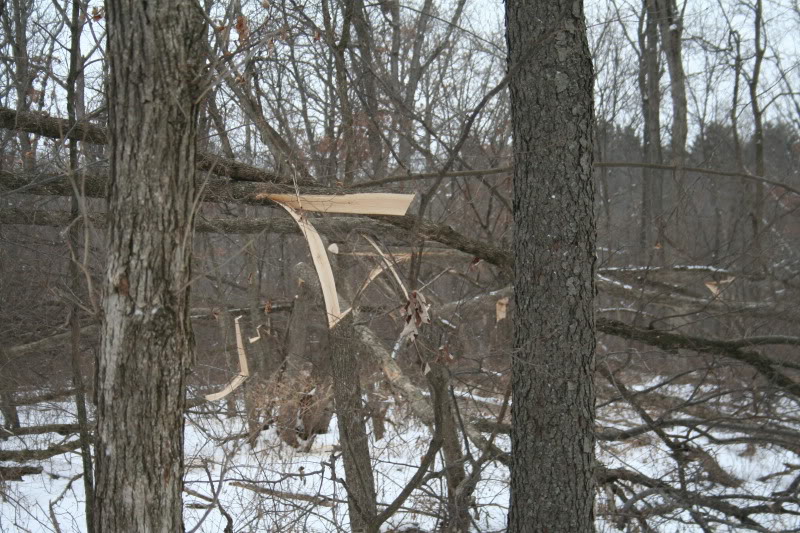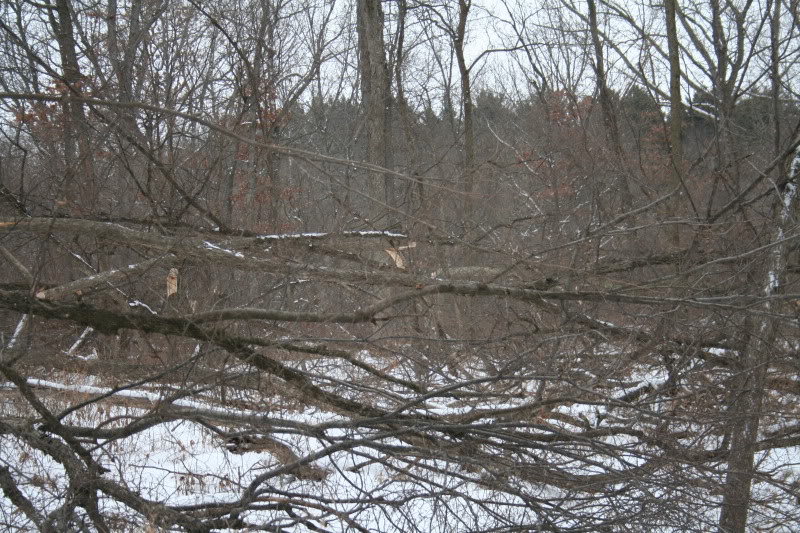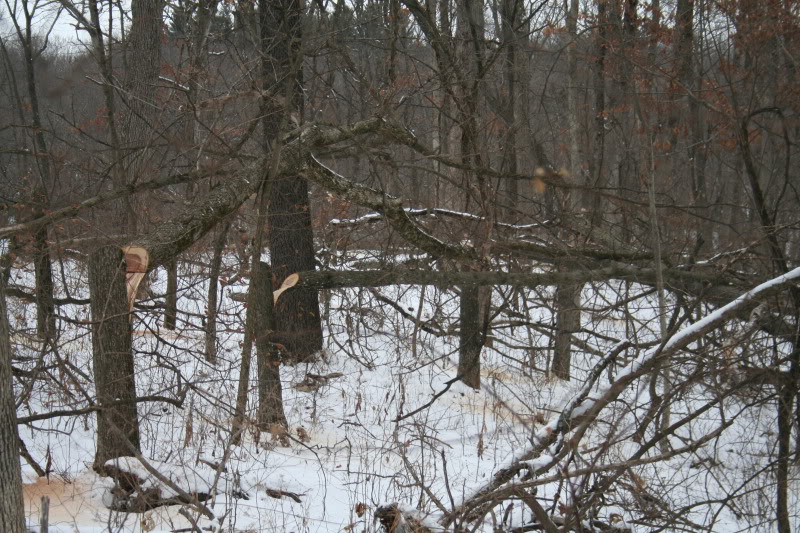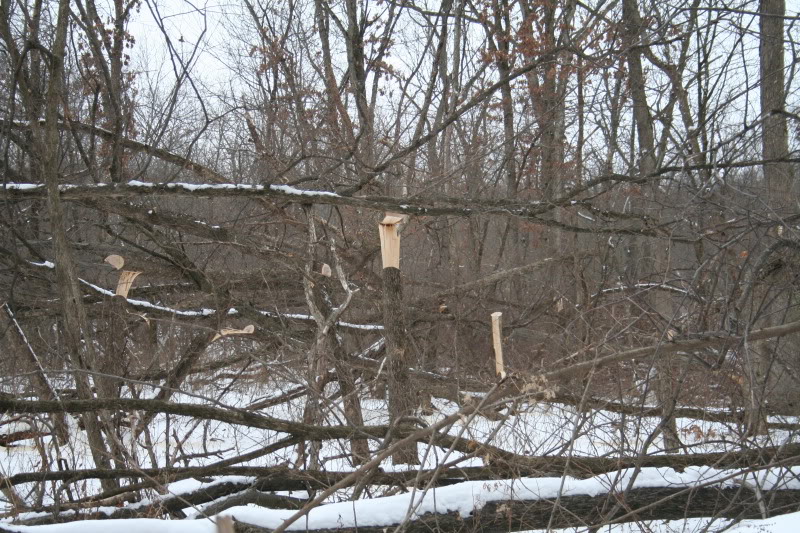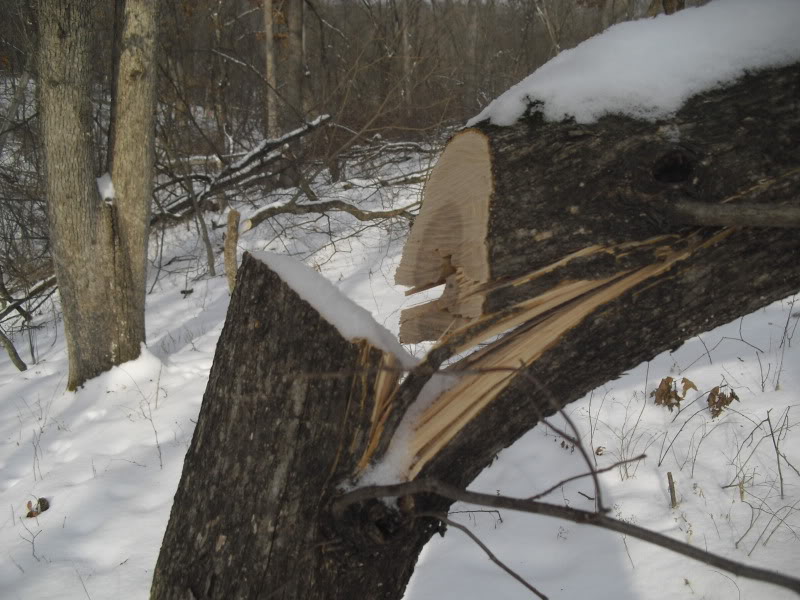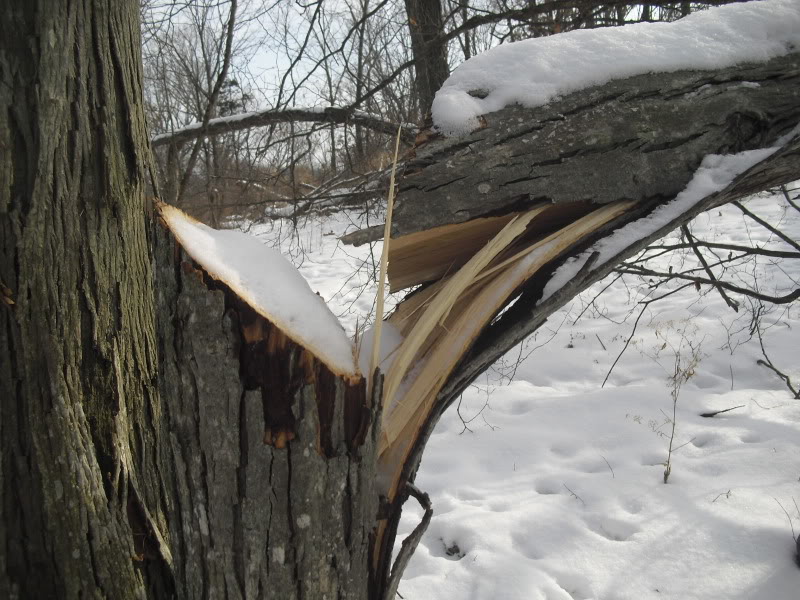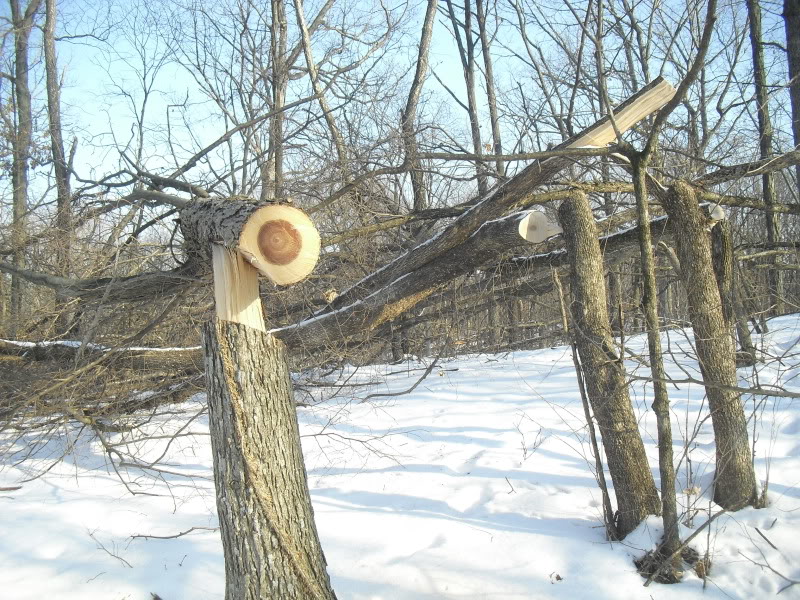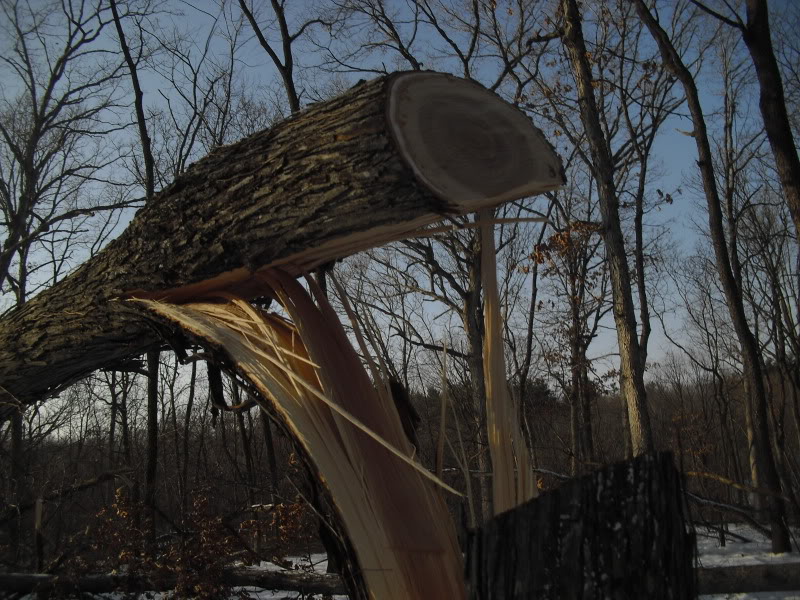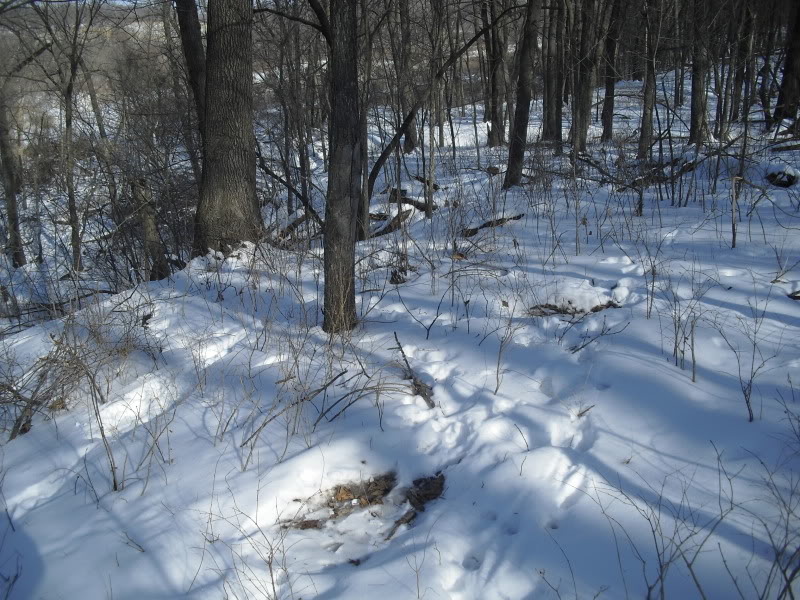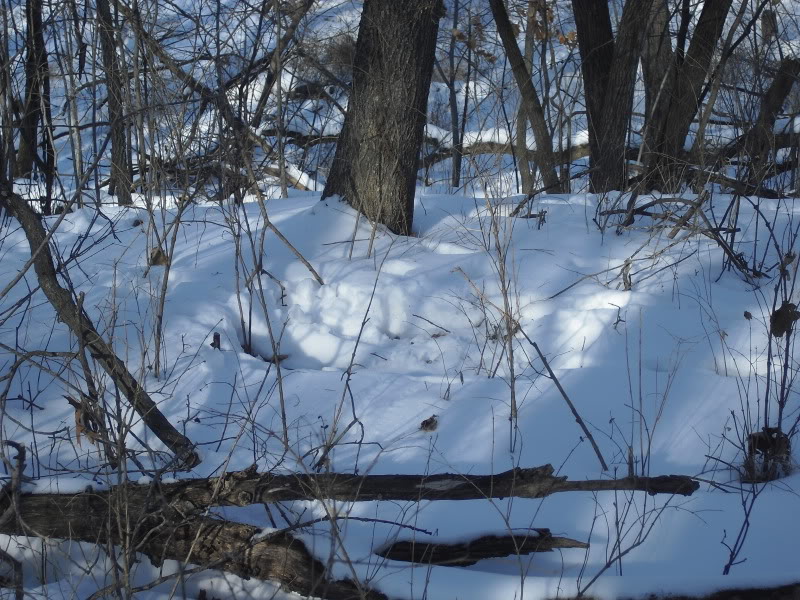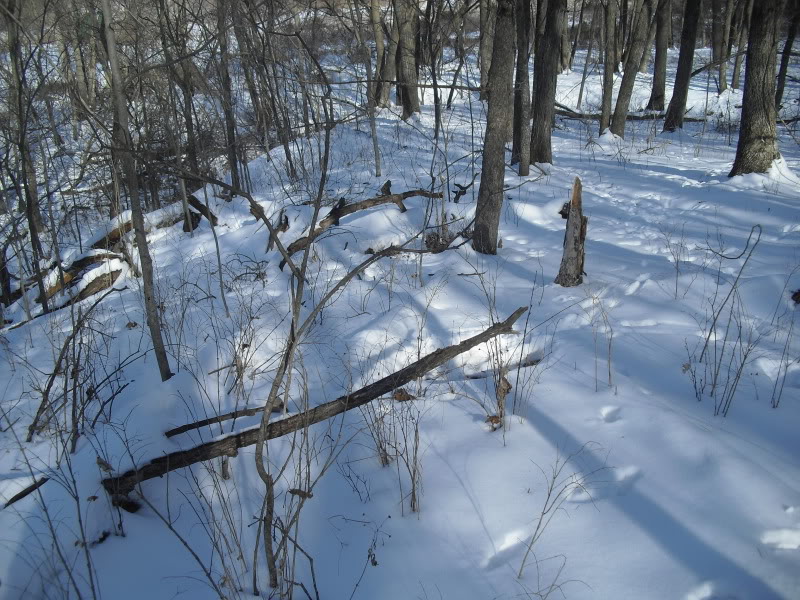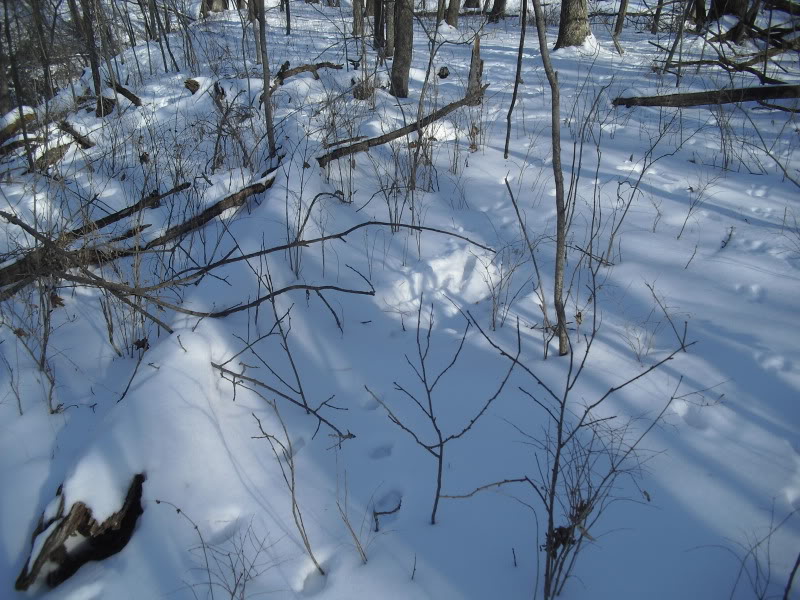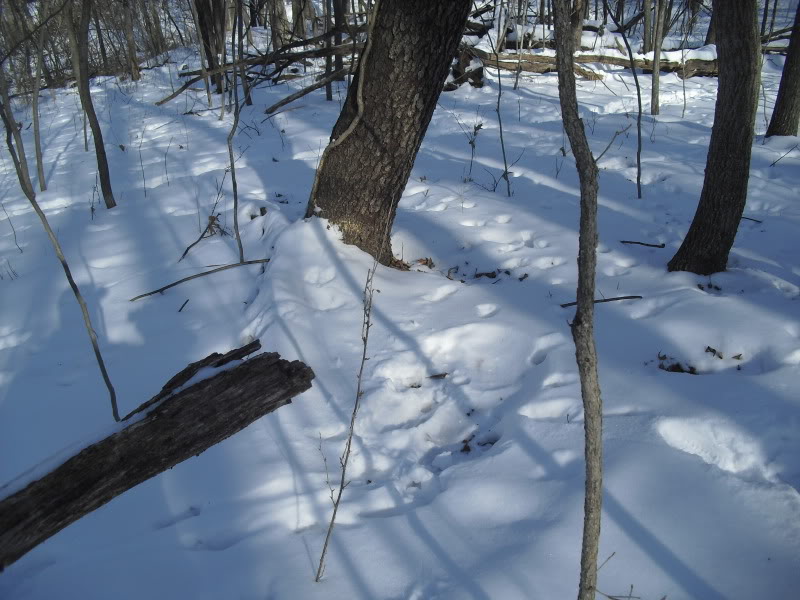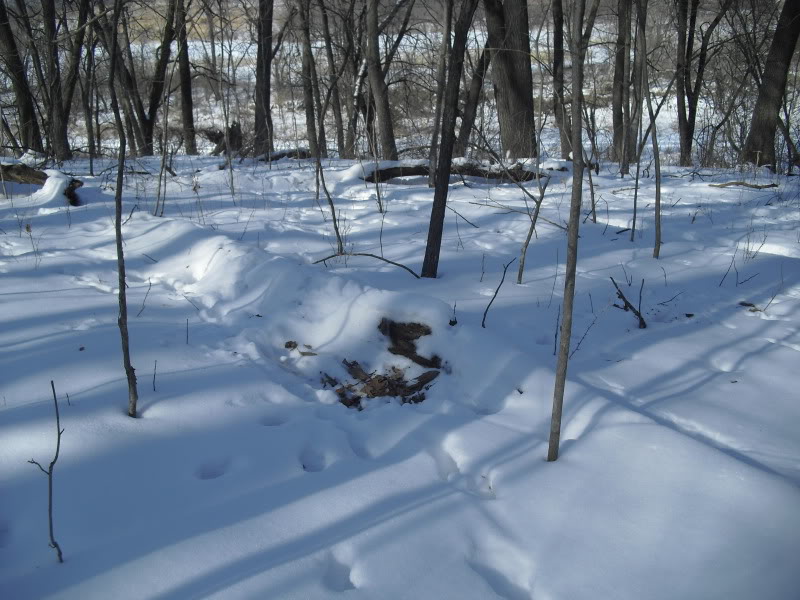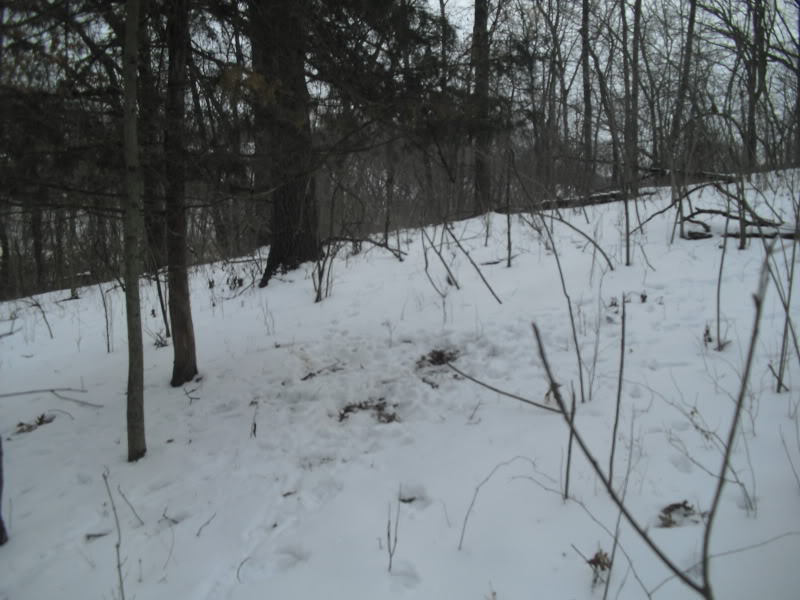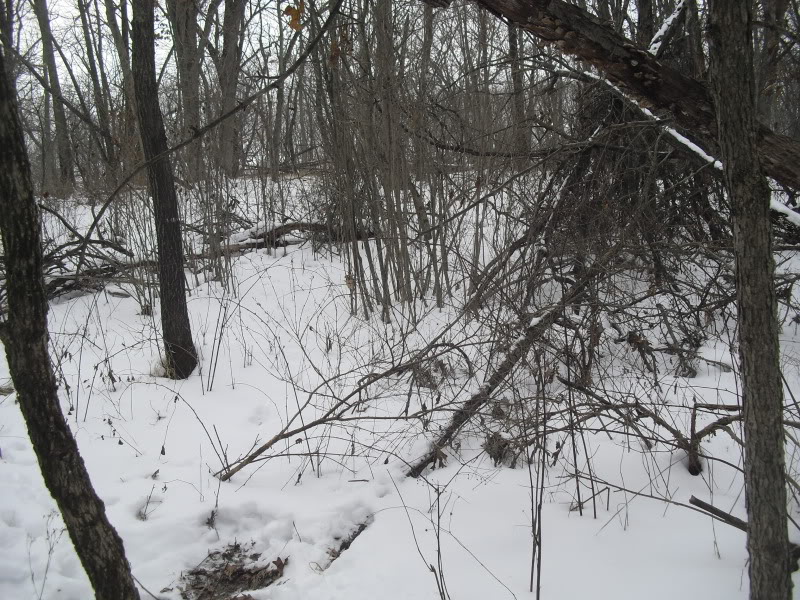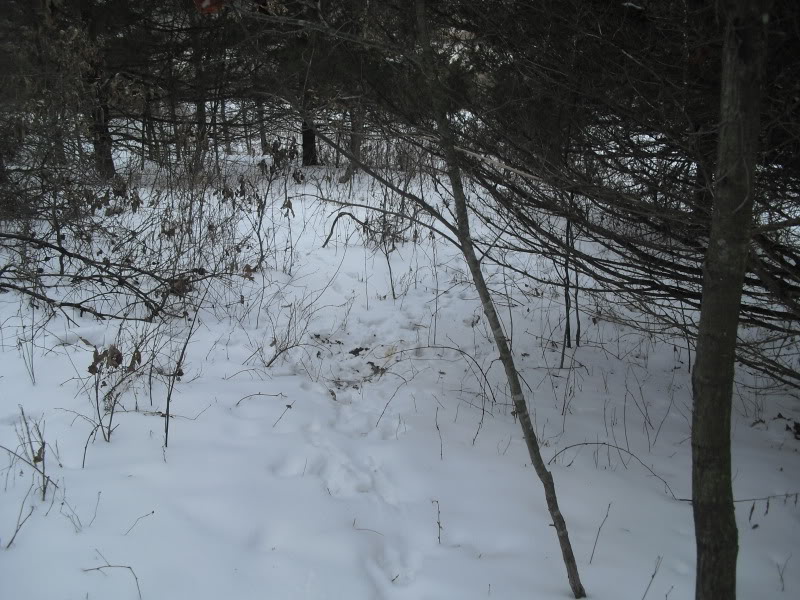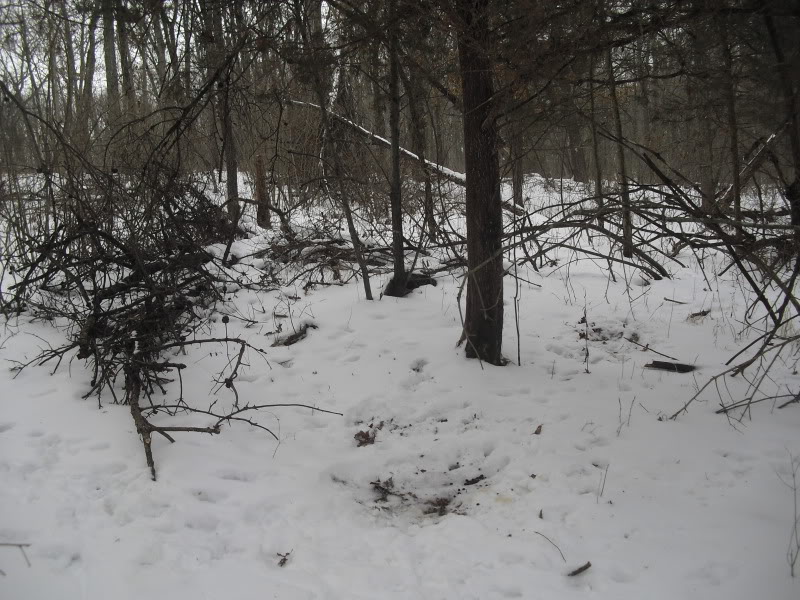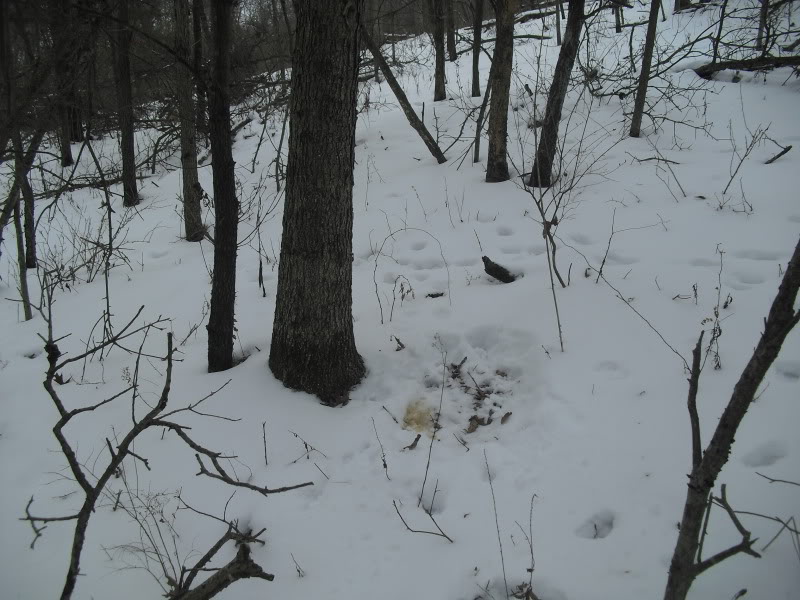HINGING –
Hinging is the term used for the practice of partially cutting through a standing tree until the tree crown falls while leaving as much connective tissue intact as possible between stem’s portions above and below the cut. The objective of the practice is to develop quick cover while retaining a partially live crown resulting in a ‘green brush pile’. This is a useful tool for field edges, and when used in moderation and with knowledge aforethought, within the interior of woodlands. I have seen this practice misused so many times, though, that it makes me cringe. Believe me, any fool can buy a chainsaw and make a mess and this seems to happen most often when a landowner reads some magazine or other reference which refers to hinging as THE way to make cover. The real problem is that there is usually no foresight and little knowledge used when applying the practice.
Oftentimes, only a portion of the crown of a hinged tree remains alive because too small a percentage of tissue at the hinge remained intact and undamaged. Then only sprouts from the cut surface, bole and base of the tree remain. The sprouting capability of a tree stem decreases as it grows larger in diameter. The sprouting capability of a 3-inch diameter stem, for example, is roughly 3 times what it is for a 10-inch diameter stem of the same species. Also, sprouting vigor varies from one tree species to another. The sprouting properties of trees are used as a tool in some forestry applications. However, when sprouts are touted as browse material for deer, one important consideration is usually forgotten – with hinge cuts, the sprouts will soon grow above browse height unless the deer concentration is exceedingly high and the number of hinge cuts is low. Once above browse height, the sprouts present a problem. Sure, they’re still making a mess but they soon grow into larger stems which serve little purpose for any wildlife species and adversely affect any desirable tree regeneration which may develop. Sprouts growing from the edge of a cut surface are weakly attached and as they grow in diameter they are increasingly prone to breaking off. Any portion of a crown which does remain alive usually declines over time. The lifespan of these damaged trees is shortened by disease and breakage and seed production is undependable. A site which has been laid waste to hinged trees resembles an early succession stand of young trees and shrubs (thick cover) but it is much less likely to succeed into a desirable stand with desirable tree species. It is also difficult to go back into the hinged site and correct the situation.
Timber stand improvement is the term used for a collection of woodland management practices used to alter a woodland for a multiple of landowner objectives. Thinning, crop tree release, weed tree removal, site preparation for natural regeneration and crop tree pruning are the t.s.i. practices most commonly used in southern Iowa. Application of some or all of these practices is the alternative to making just hinge cuts when quick cover is an objective. T.s.i. will result in a greater variety of groundcover, a thicker understory (cover) resulting from increased exposure to sunlight, increased regeneration of desired tree species, increased mast production for wildlife, reduced regeneration of undesirable species, and increased income potential. An example of a t.s.i. practice: Selectively release desirable species, e.g. white oak, black oak, by deadening competing trees of less desirable species. Some of the smaller competing trees and weed trees could be hinged during the dormant season while others could be felled during the growing season to provide some thick cover for bedding and turkey nesting the following season. The rest of the trees to be deadened, especially ones larger than 10 inches d.b.h., could be double-girdled or frilled and left standing to serve as snags for woodpeckers as well as other insect-foraging birds and for secondary nesters which use excavated woodpecker holes such as nuthatches, chickadees and flying squirrels. These activities still result in thick cover but the t.s.i.-treated stands, as opposed to hinged stands, will continue to develop into desirable stands. Timber stand improvement practices, when coupled with a multiple of objectives including wildlife, benefit a lot more species of wildlife than just deer and turkey.
Getting back to the subject of hinging, if you are going to make a hinge cut under any circumstance, be sure you know your tree species so that you retain those species which are of the greatest wildlife and commercial value. With that in mind, also be aware that a woodland with a good diversity of tree and shrub species is much more beneficial to a wide variety of both game and nongame species than one which is predominantly 2 or 3 tree species with a thin shrub understory. Don’t target a tree species for reduction or elimination unless it is a problem species such as ironwood or black locust. I commonly see shagbark hickory deadened through a woodland because the landowner ‘learned’ that hickories are worthless and that getting rid of hickory is the way to help out the oak resource. This rationale uses too broad a brush. Hickories serve a lot of wildlife species, too, though not so many as the oaks. Instead of targeting hickory in general, release oak crowns as they need it and make openings where less desirable species such as ash and elm dominate locations next to oak seed trees.
When making a hinge cut, the percent of stem circumference which remains intact will determine how much, if any, of the felled crown will remain alive. The greater the lean of the stem from a vertical plane, the greater the success because a greater percentage of the total circumference will remain intact and unruptured. The smaller the stem, the greater the success. Timing is important, too. The tree must be dormant. Mid to late winter is better than mid to late fall. Avoid making the cuts when the temperature is really cold because the tissue is more likely to fracture rather than bending at the ‘hinge’.
If you plan to hinge some trees along a woodland edge to favor upland game, consider a two-step approach. During the spring or summer before the winter in which you’ll do the hinging, identify the trees you plan to hinge. Identify where a tree’s crown will fall and then, using any glyphosate-based postemergent herbicide (e.g. Roundup, Cornerstone and others), spray an area at least 50% larger than the crown size. The resulting weed growth which will develop after the grass dies will be much more useful to quail and pheasant chicks than the dense grass cover would have been. Broadcasting some ladino or red clover seed into the sprayed areas would also benefit chicks because they require high-protein insects for early development and insects are attracted to legumes.
Duane Bedford
Retired District Forester
Chariton, Iowa
